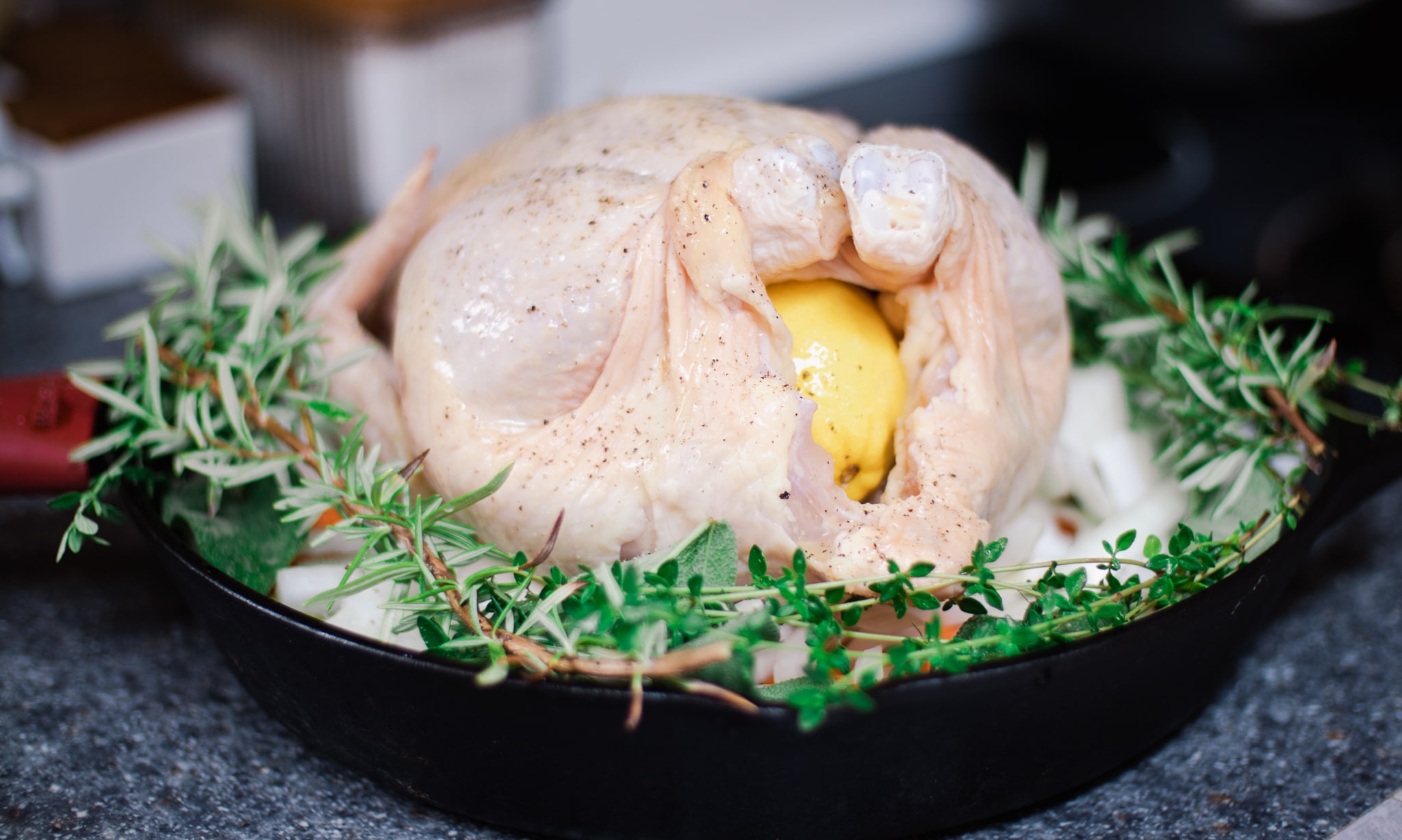
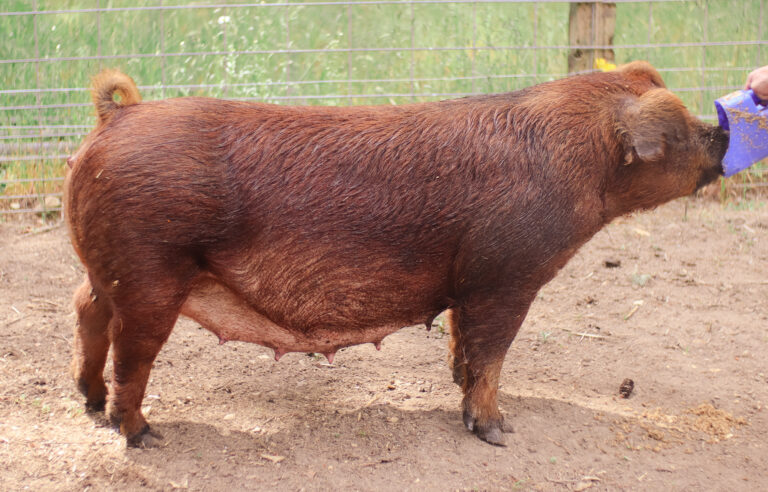
We are preparing for farrowing this week! We are very excited as we have had many ups and downs with breeding and are really hopeful Pippi will deliver for us! Despite pasturing our pigs most of the time we still have our pigs farrow naturally in a very large stall. We are as hands-off as possible, but I still like to be prepared for the just in case. When we had our first litter we had very few animals other than the pigs and therefore very few supplies. Keep reading to find out how we prepare for farrowing on our small homestead.
Our first litter came before we had many supplies. We felt completely unprepared and put a whole “farrowing kit” together. That kit consisted of:
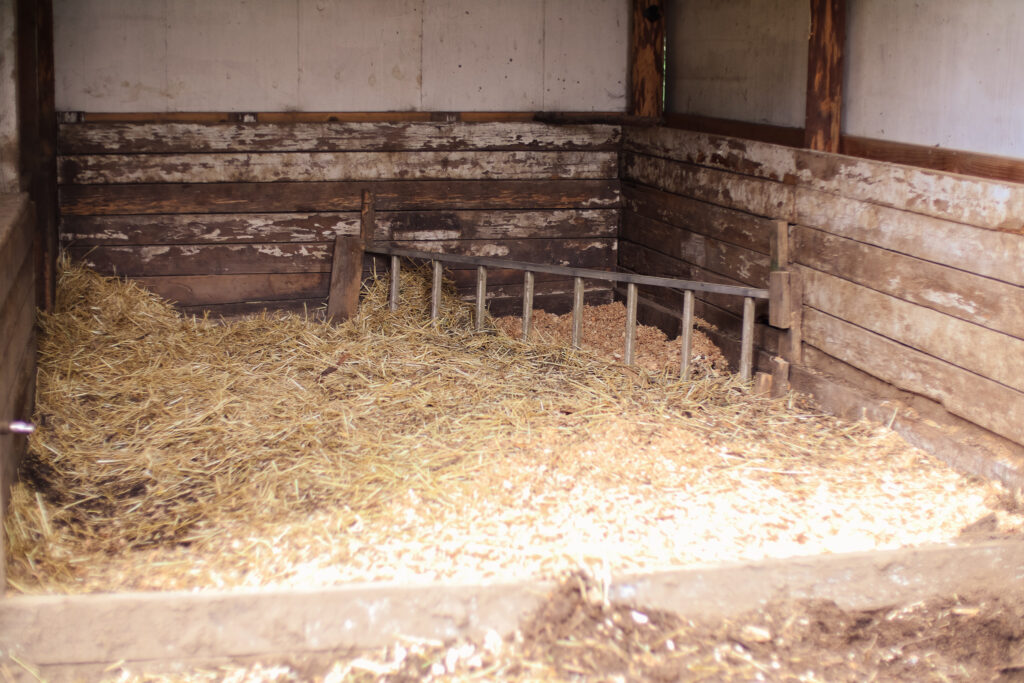
Pigs will inevitably start nesting while preparing for farrowing, so make sure to provide appropriate nesting materials. If you don’t they will find their own materials which could be your fence or barn. We give our sow a lot of extra straw which we usually have to bail out because it’s too much for piglets to move around in, but it keeps mom happy during the early parts of labor. Our preference is to give them straw and they seem to love pushing and packing it around.
Approximately 12-24 hours after delivery your sow will suddenly become ravenous. She just worked hard! And she has to produce milk for all these little piggies. So make sure to feed on your list of supplies for preparing for farrowing. If you are fermenting feed make at least double to triple the amount usually fed to help her out. It is recommended to feed her as much as she wants while she is nursing. She will spend a lot of time laying down letting the piglets nurse so we like to give her space outside of the stall at feeding time to eat and drink in peace.
Not feeding a nursing sow enough risks her health as she will deplete her resources to feed her piglets, and it can risk the piglets if she cannot produce enough. Let her guide you in how much she needs, again nature knows best.
Sows need lots and lots of water! She needs access 24/7 to fresh cool water. During the summer heat, this can become a real issue and our last sow quickly became dehydrated after labor. We supplemented her feed with lots of water to help get more into her and offered extra water in a feed pan every 2 hours. Luckily, she quickly recovered but that could have become a disaster. When preparing for farrowing we turn on the water inside the stall, otherwise, the water is shut off, because they always use it to get the stall wet.
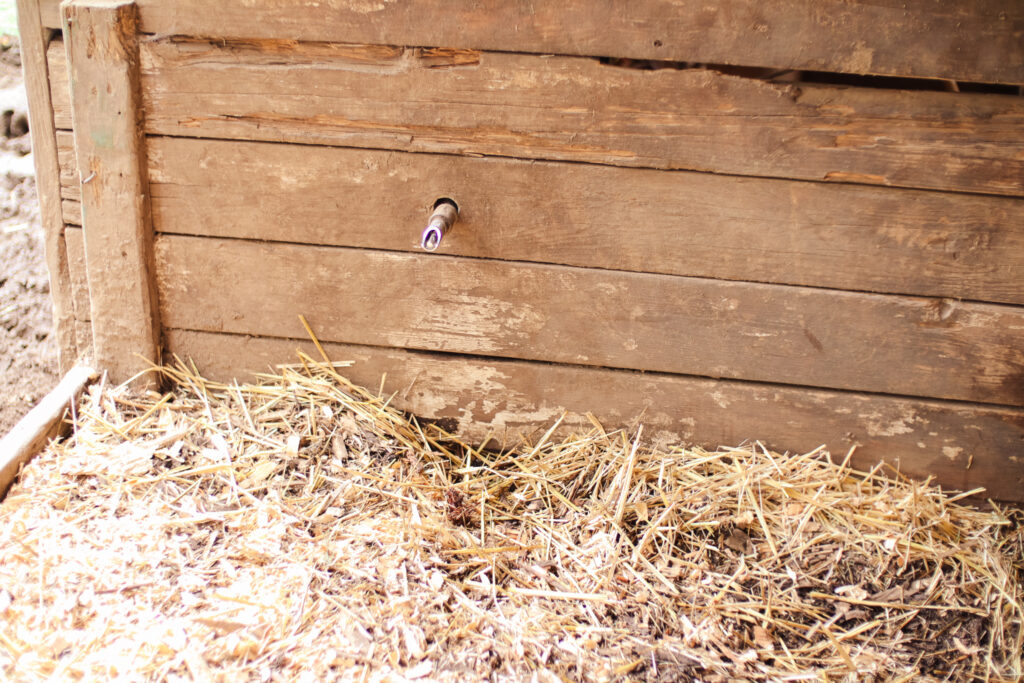
A creep is an area that piglets can get into, usually a bar or something a foot off the ground, but the sow cannot get into it and cannot lay down on them. We use an old aluminum ladder mounted into the corner of our stall. Most of the time the sow ends up laying right up against it so the piglets can come out nurse and go right back in.
We choose not to use a farrowing crate, but instead, we provide a large stall with a creep for the piglets to get away from mom. The biggest loss in piglets occurs in the first week from sows laying on top of them. Hence the development of farrowing crates. They have their place and offer security. If you do choose to not use a crate, then offering the right space is imperative. There must be enough room for mom to lay down without crushing piglets and enough space for the piglets to get away from mom. Good moms will lay down slowly and react very quickly if a piglet ever squeals which is their alarm system, but even the best moms do it sometimes. The creep should also have some way to warm the piglets especially if they are born in the cold winter months.
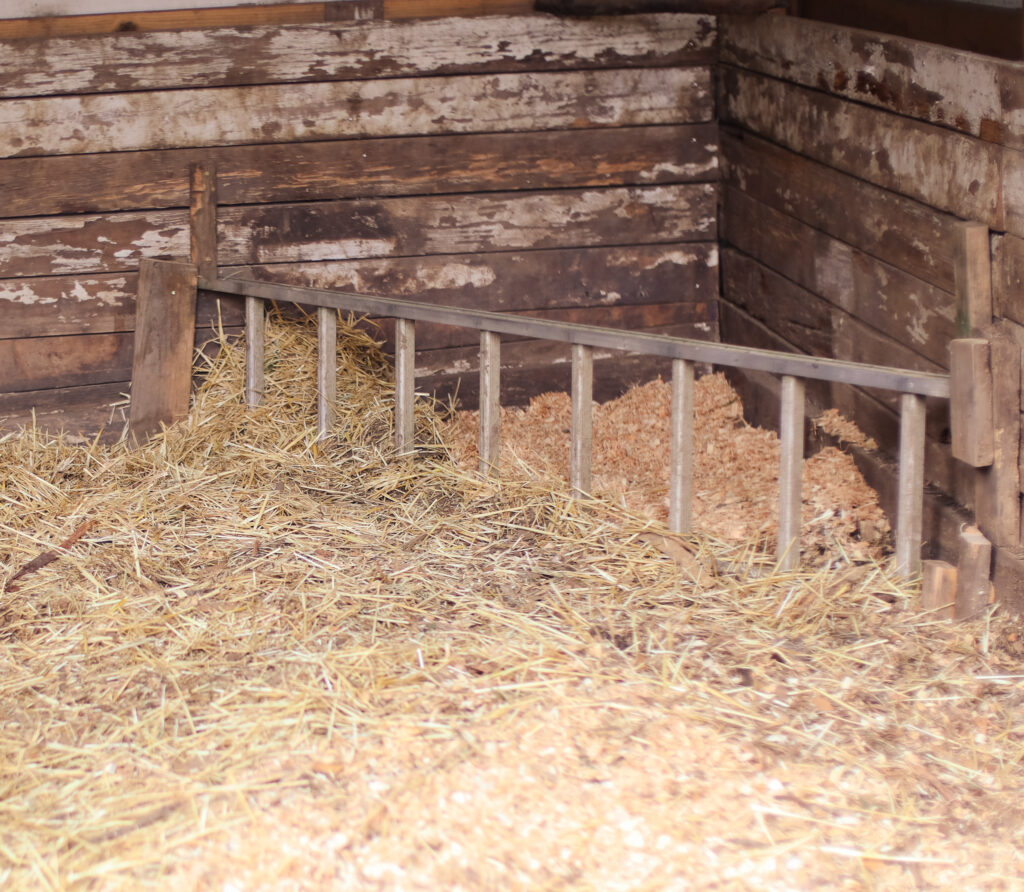
It’s great to be prepared for the “just in case” but it’s also best to let the momma pig’s instincts flow. We do not interfere with these natural processes. Clipping teeth and tails has been a long-time practice to prevent injury to the sow and the other piglets. This is only an issue in concentrated pig-rearing operations. Also, there can be long-term effects to clipping teeth which is a real problem for homesteaders who need their sows to live and produce longer.
Resist the urge to jump in and do too much. Doing too much can often do more harm than good and will affect the sow’s ability to keep delivering as well as bond with her piglets. Nursing piglets help sows naturally produce oxytocin which helps them keep contracting and delivering the rest of the piglets as well as the placenta. We originally trimmed umbilical cords and tied them off with dental floss but what we found is they didn’t dry up as quickly and therefore were more likely to get stepped on causing hernia issues. Now we only tie umbilical cords if they don’t stop bleeding after drying off.
Take a deep breath! Enjoy the process and watch nature work. It is truly amazing how an animal who has never had a baby or even seen a baby before knows exactly what to do. Letting nature work is the best practice and will only help the development of your program. We are ready to act if needed but only after the sow has been given a full opportunity to manage it herself.

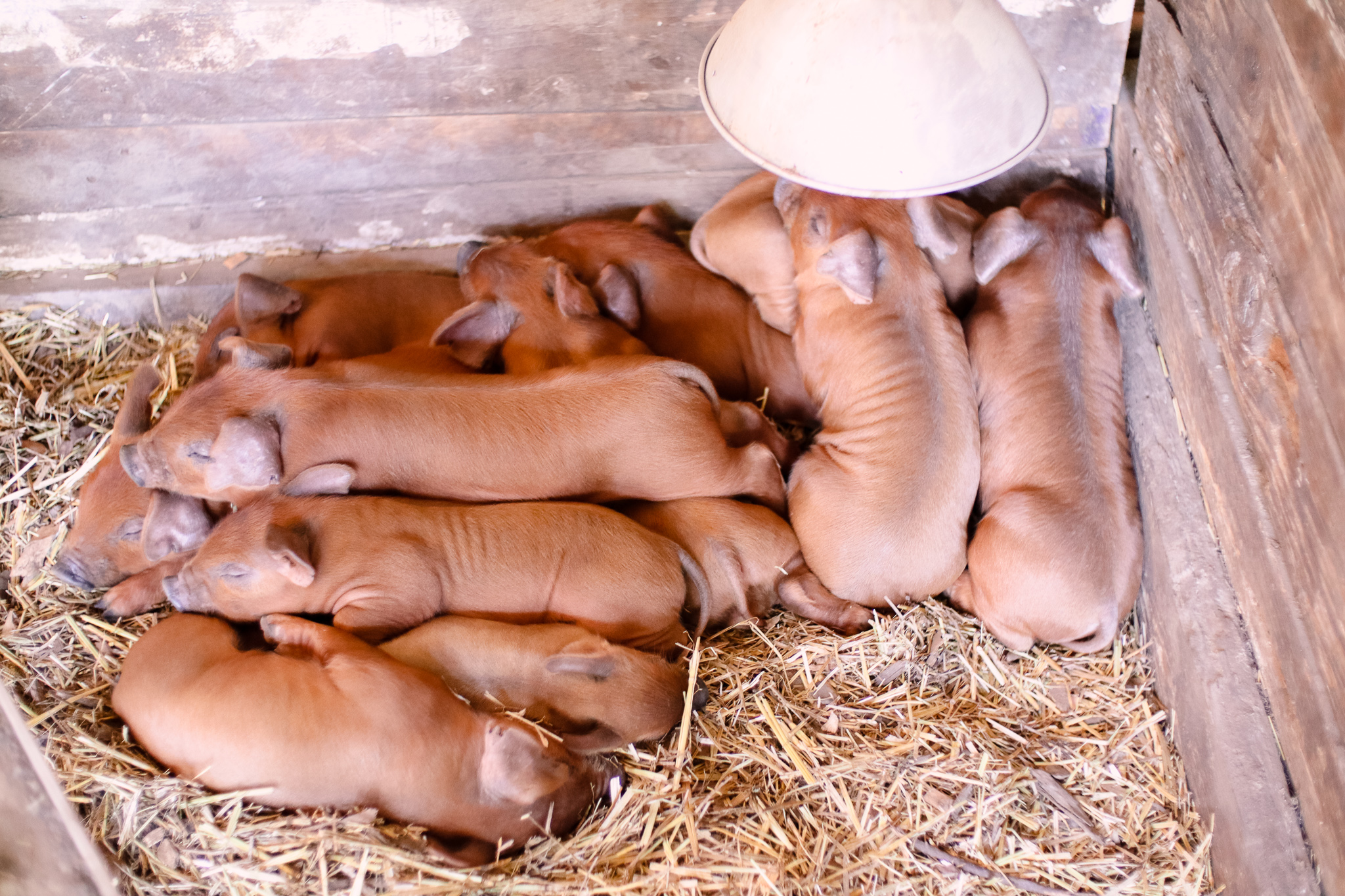
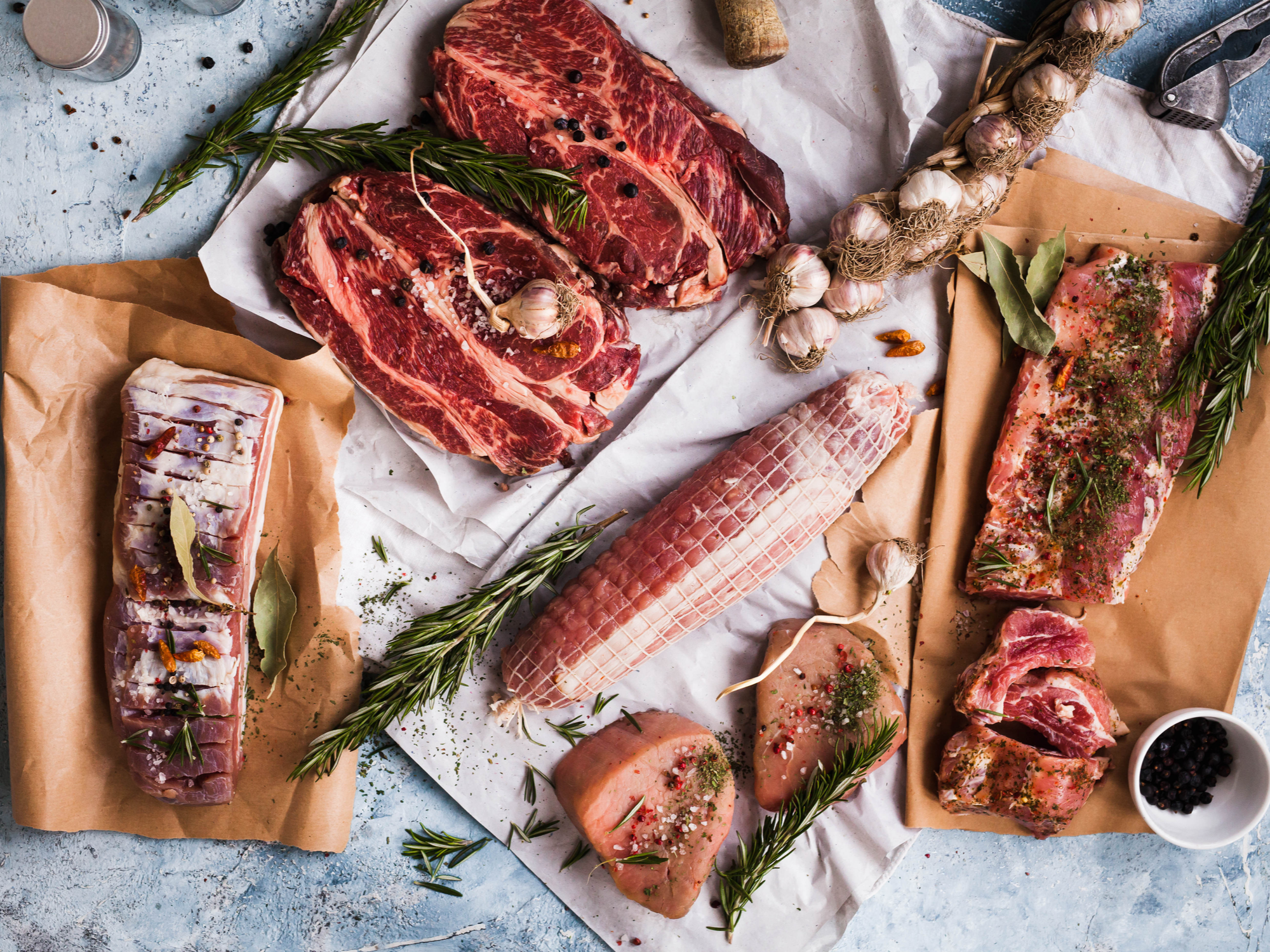
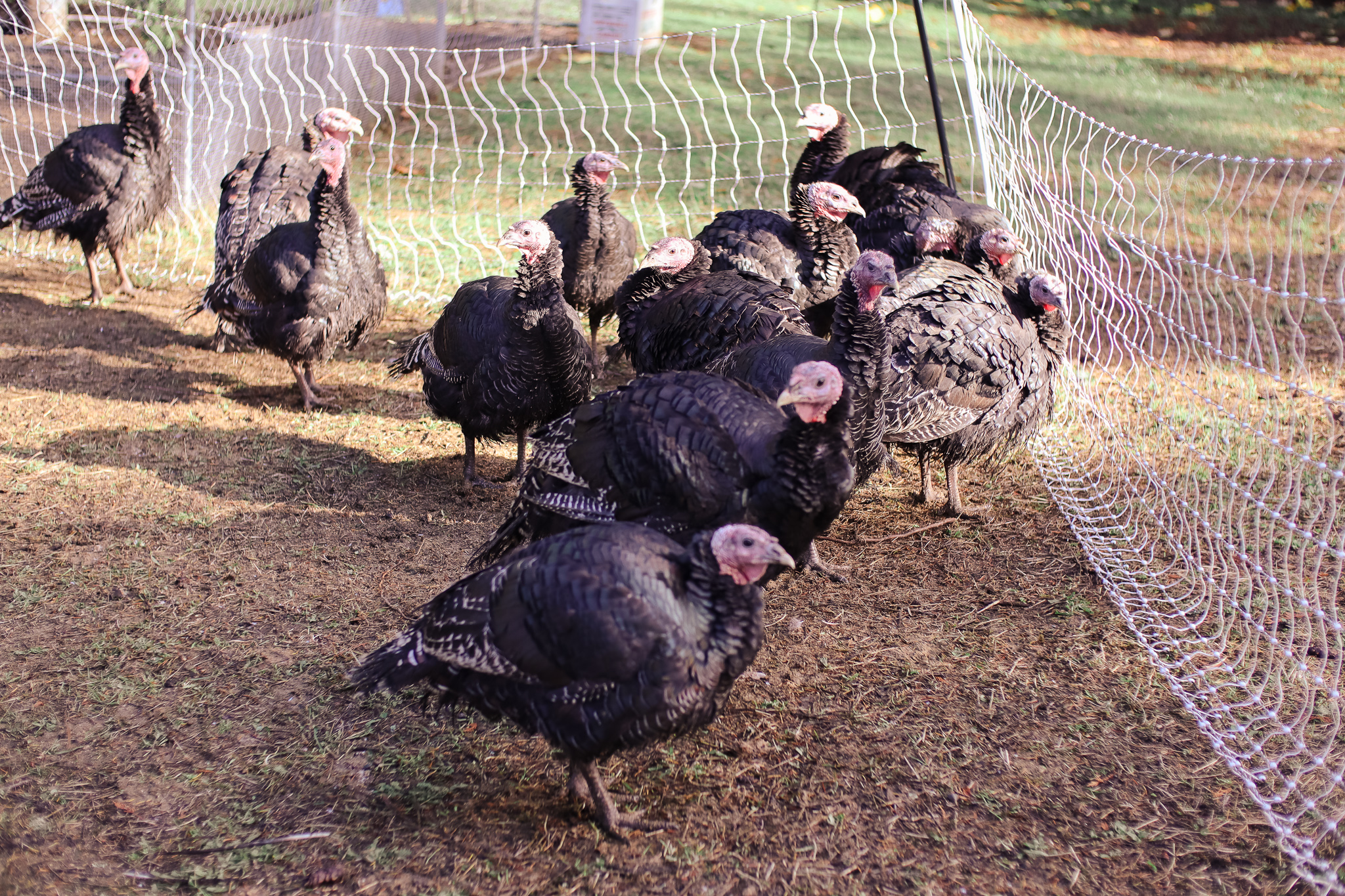
No spam, notifications only about current blog updates.